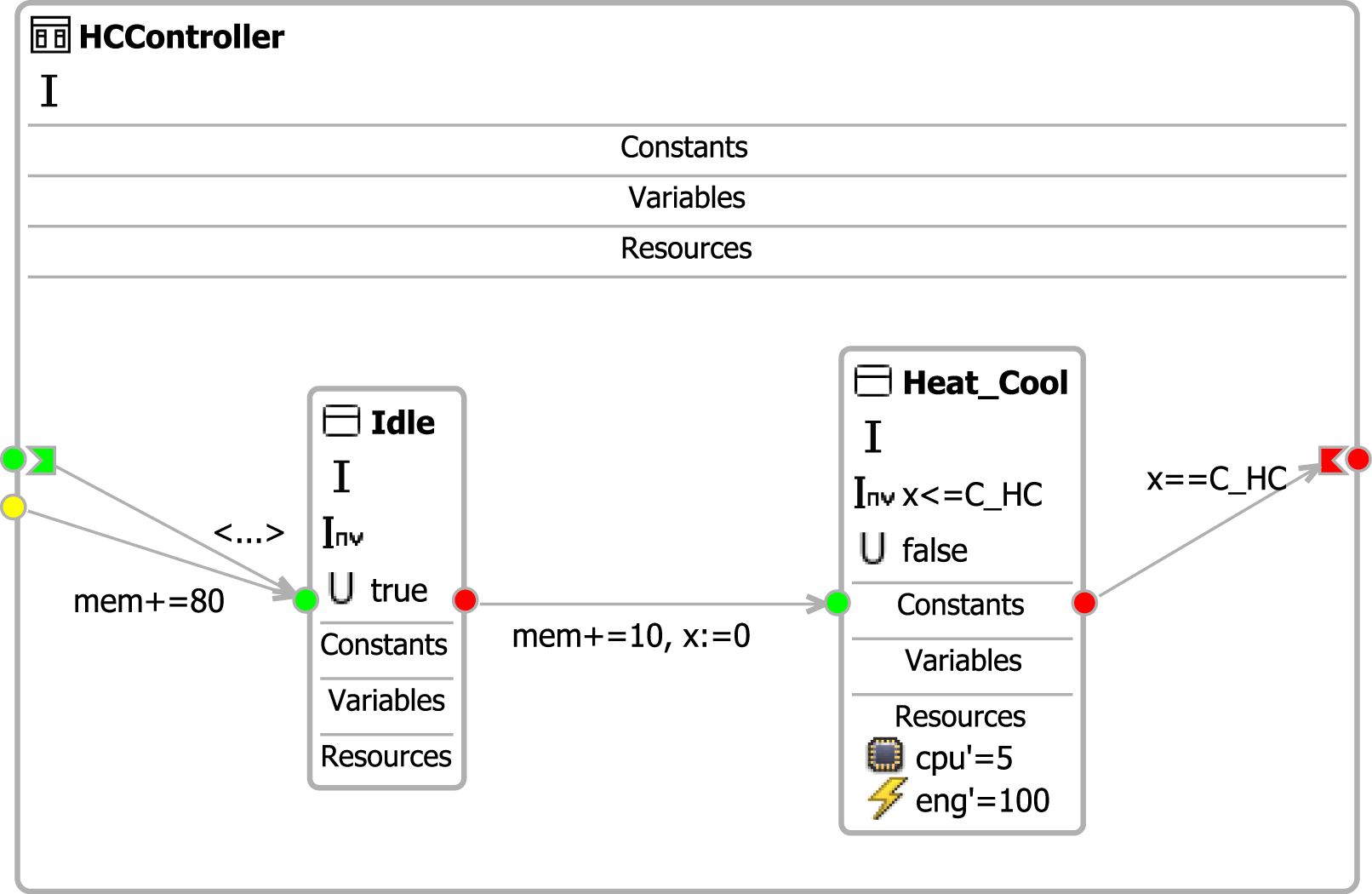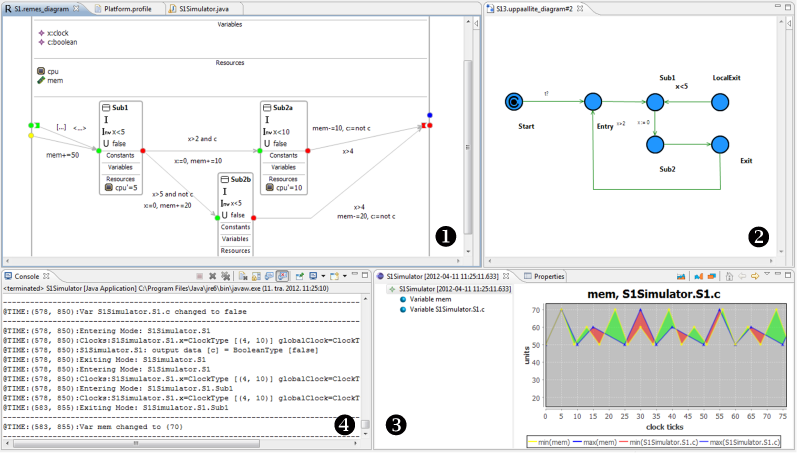REMES (REsource Model for Embeded Systems) is a behavioral modeling language supporting component-based embedded systems. In REMES, the internal behavior of an embedded component is denoted by modes, atomic- or composite. The mode’s discrete control is ensured by a control interface (entry- and exit points), while the data is transferred between modes through a data interface. The control flow is depicted by a set of edges, annotated with discrete actions, whereas the resource-wise behavior of a component is expressed by mode annotations in form of the first derivatives of the resource variables, which evolve at positive integer rates. The analysis of REMES-based systems is based on a weighted sum in which the variables capture the accumulated consumption of resources.

REMES Editor is a graphical environment for behavior modeling of embedded components in the semantics of the REMES modeling language. Editor allows users to easily create REMES artifacts such as composite modes, submodes and conditional connectors. Submodes and conditional connectors can be nested inside composite modes. User defines the control flow by creating edges between diagram elements. Action guards of the edges are defined by in-place editing in the diagram. Basic checks are performed to prevent user from creating invalid models. User can define typed variables, constants and resources in separate sections within the modes. Remes diagram editor integrates with the Eclipse properties view, which displays and edits context sensitive information for the currently selected diagram element. This information can also be edited, e.g. to change variable type or the initialization clause of a mode. In addition, filters can be applied over the REMES diagram to outline specific aspect of the model - like behavior, timing or resource usage - and to outline specific aspects of the model.
Transformation of REMES models into priced timed automata (PTA) results in PTA models representing the same behavior. A graphical editor for resulting PTA models is provided, as a tool to visually inspect transformation results. Model files for both UPPAAL (timed automata) and UPPAAL Cora (priced timed automata) can be exported for verification and analysis.
The possibility to simulate and test the behaviors as they are being designed provide valuable input for the designer, and possibly uncover trouble spots before proceeding to full formal verification. REMES-IDE transforms behaviors into a set of Java classes that simulate the modeled system. REMES simulator is still in early-stage development - the system designer can follow the mode transitions, the clock- and variable changes in the simulator output.
REMES-IDE helps you to:
- Define the resource-wise behavior of your components and systems,
- Convert the behaviour to PTA models for formal verification,
- See the how the resources change with simulator traces, while the IDE
- Runs the behavior in a simulator.
REMES-IDE can be integrated with PROGRESS-IDE to facilitate development of component-based embedded systems using ProCom component model.
For more info, see:
.png)
